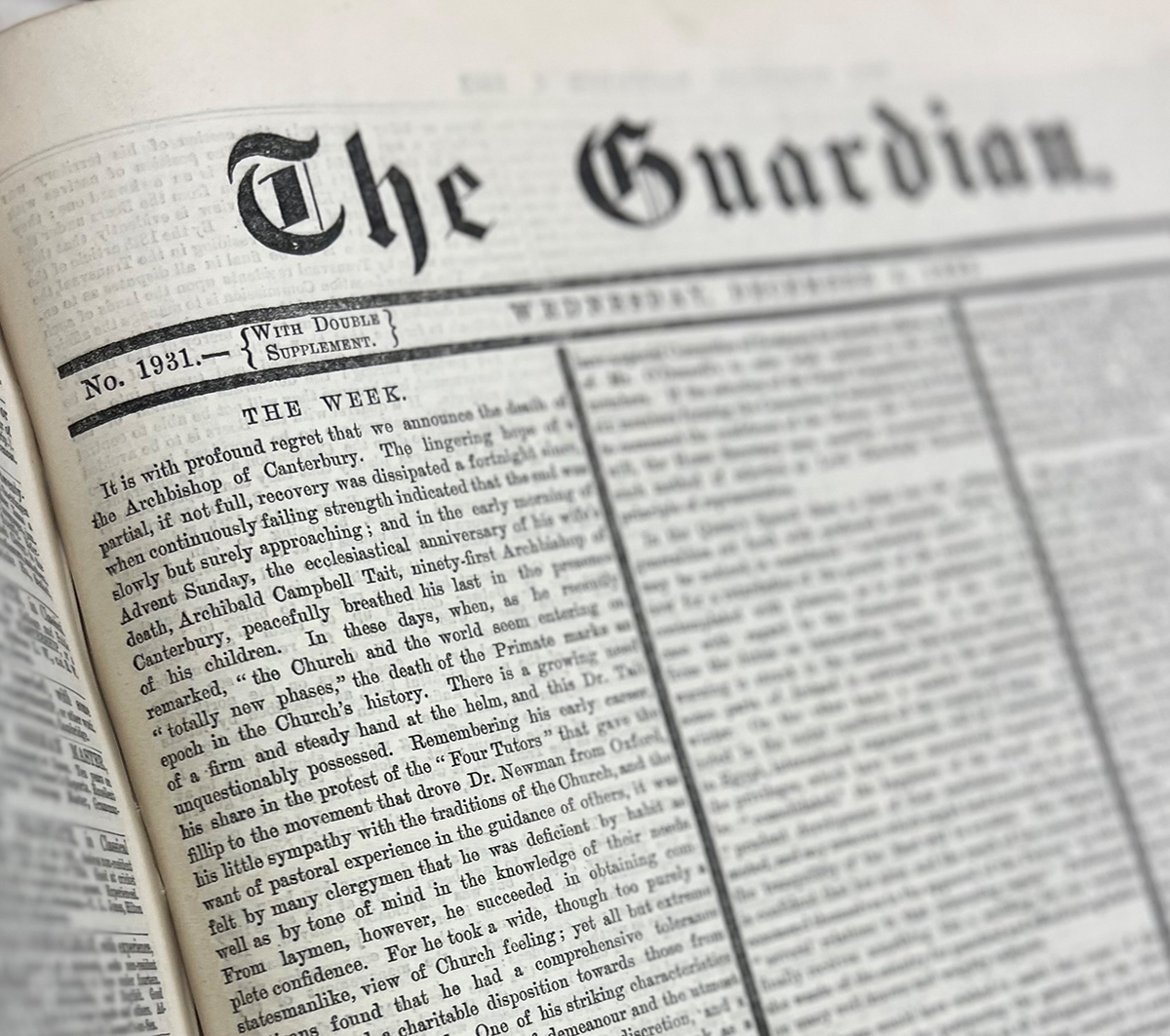 By Emma Laws, Cathedral Librarian
By Emma Laws, Cathedral Librarian
If you flick through the pages of this 19th century Anglican weekly newspaper you will come across the odd issue printed with heavy black borders, as in the picture here. The use of black borders signalled the paper was in official mourning. In this issue from Wednesday 6 December 1882 the black borders mark the passing of Archibald Campbell Tait (1811-1882), 91st Archbishop of Canterbury who had ‘peacefully breathed his last in the presence of his children’ the previous Sunday. There were numerous other ways a newspaper could mark such an event and typically they would follow up with a printed obituary and perhaps even a poem written especially for the occasion.
Did you know? The Cathedral Library holds a near complete run of the Anglican Guardian Newspaper from 1849 to 1894. The publication, which began a few years earlier in 1846, was founded by Richard William Church, Thomas Henry Hadden and various other supporters of the Tractarian Movement. This movement, alternatively known as the Oxford Movement, sought to introduce Roman Catholic liturgical practices to the Church of England (no doubt causing a few sleepless nights for Archbishop Tait during his episcopacy).
The newspaper typically featured news, politics, finance, police reports, book reviews and letters from clergy around the country. Indeed, the earliest issue held at the Cathedral Library (3 January 1849) includes a letter from the Bishop of Exeter to the archdeacon of Totnes on matters relating to marriage. Advertisements appear at the end of issues, including births, marriages and deaths, and other notices; in April 1849, the Church of Ottery St Mary politely asked that all those friends who had pledged donations to the church’s restoration fund should now pay up ‘at their earliest convenience’ at the National Provincial Bank of Exeter.
The paper also listed weekly gifts to the poor and posted employment opportunities for the working classes: ‘Wanted, an active, trustworthy, middle-aged woman, as plain cook, in a clergyman’s family. She must be able to manage a small dairy and to bake. She must be a true Churchwoman, and will in a general way be expected to attend the daily prayers.’
For many years, The Guardian became the leading newspaper of the Church of England – it even published several works by C. S. Lewis in the 1940s, including a serialised version of The Screwtape Letters. Publication ceased in 1951 due to rising costs of production.